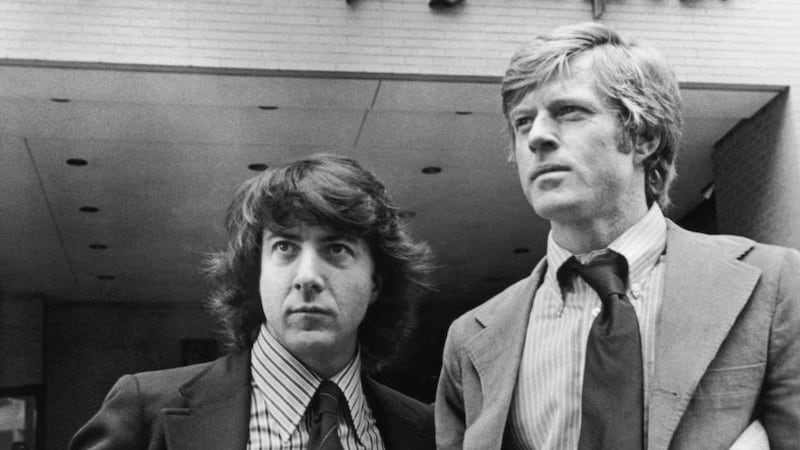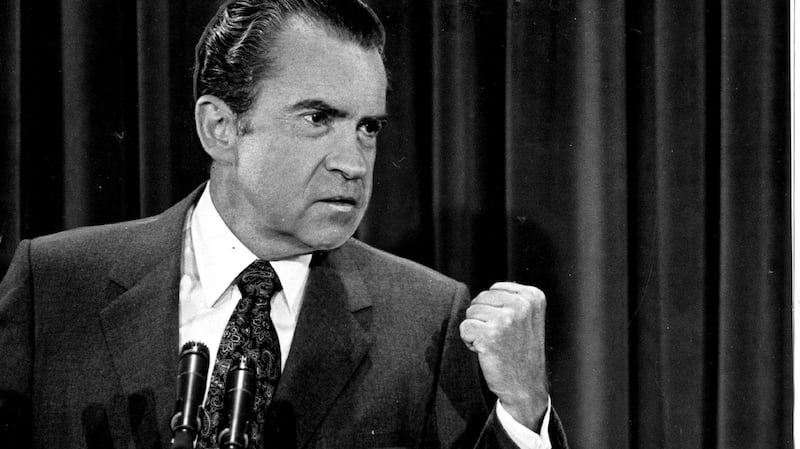Just up the road from where I live is a car-parking garage essentially built into a hillside.
I must have walked passed it on hundreds of occasions without giving it a second thought.
The garage stands beneath two largely routine office buildings which also houses a dry cleaners and a tailors on the ground floor.
It was only a few weeks ago, when on a side street running perpendicular to the main road, that I noticed a sign on a pole outside one of the entrances to the garage.
In black type against a grey background, the headline on the sign simply says: “Watergate Investigation.”
This garage was the famous car park in which Washington Post reporter Bob Woodward met his source “Deep Throat”, as immortalised in the film All The President’s Men.

The real identity of Deep Throat remained a secret – despite much speculation about who it really was or if there was a single source at all – until nearly 20 years ago when the former second in command of the FBI Mark Felt revealed that he had spoken to Woodward.
The sign at the garage says that it was in this location that Felt provided information to Woodward which exposed the political scandal that became known as Watergate.
The actual Watergate building, where in 1972 a group of men were arrested while trying to carry out a burglary in a premises operated by the Democratic Party, is not too far away – situated just over the Key Bridge on the other side of the Potomac river.
The ensuing scandal over the burglary and, perhaps more importantly, the subsequent cover-up would eventually bring down president Richard Nixon and see several of his most senior aides go to jail. Nixon was pardoned by his successor, Gerald Ford.

The sign outside the parking garage says Felt provided Woodward with information which exposed the Nixon administration’s obstruction of the FBI’s investigation into Watergate.
“[Felt] chose this garage as an anonymous secure location. They met at this garage six times between October 1972 and November 1973. The Watergate scandal resulted in president Nixon’s resignation in 1974.”
“Woodward’s managing editor, Howard Simons, gave Felt the code name ‘Deep Throat’. Woodward’s promise not to reveal his source was kept until Felt announced his role as ‘Deep Throat’ in 2005,″ it says.
In recent days, two issues brought the story of Deep Throat and the parking garage back into my mind.
Firstly, it was 51 years ago this week that news organisations in the city, including the Washington Post, first reported on what initially seemed an unremarkable the break-in at the Watergate building.
The arrest of the burglars and the discovery that some had previous associations with the CIA, particularly in relation to its activities against Fidel Castro in Cuba, alerted reporters, most notably Woodward and his colleague Carl Bernstein in the Washington Post, that – what became known as Watergate – was not just an ordinary burglary.
Links emerged between the break-in operation and funding raised by the campaign to re-elect the president.
Six days after the break-in and the arrest of the burglars, Nixon’s chief of staff, Bob Haldeman, told the president at a fateful meeting: “The FBI is not under control. Their investigation is now leading into some productive areas because they’ve been able to trace the money.”
Haldeman said there was a plan the CIA would claim, falsely, that national security secrets would be jeopardised if the FBI did not halt its Watergate investigation.

Nixon approved the plan, which was recorded on an internal White House taping system. It became known as the “Smoking Gun” tape. When Nixon was forced in 1974 to release these recordings detailing his knowledge of the Watergate cover-up, it marked the beginning of the end of his presidency.
The second issue that brought Watergate to mind were local newspaper reports that the company which owns the two 1960s-era buildings on top of the garage could soon begin long-planned work to demolish the whole complex.
It is envisaged that they would be replaced by a with a 32-story residential tower and a 24-storey building combining offices and retail outlets.
It is expected, however, that the history of the site will not be forgotten even if it is redeveloped, with the marker identifying the location of the most famous leak or background briefings in journalism’s history to remain in place.

















